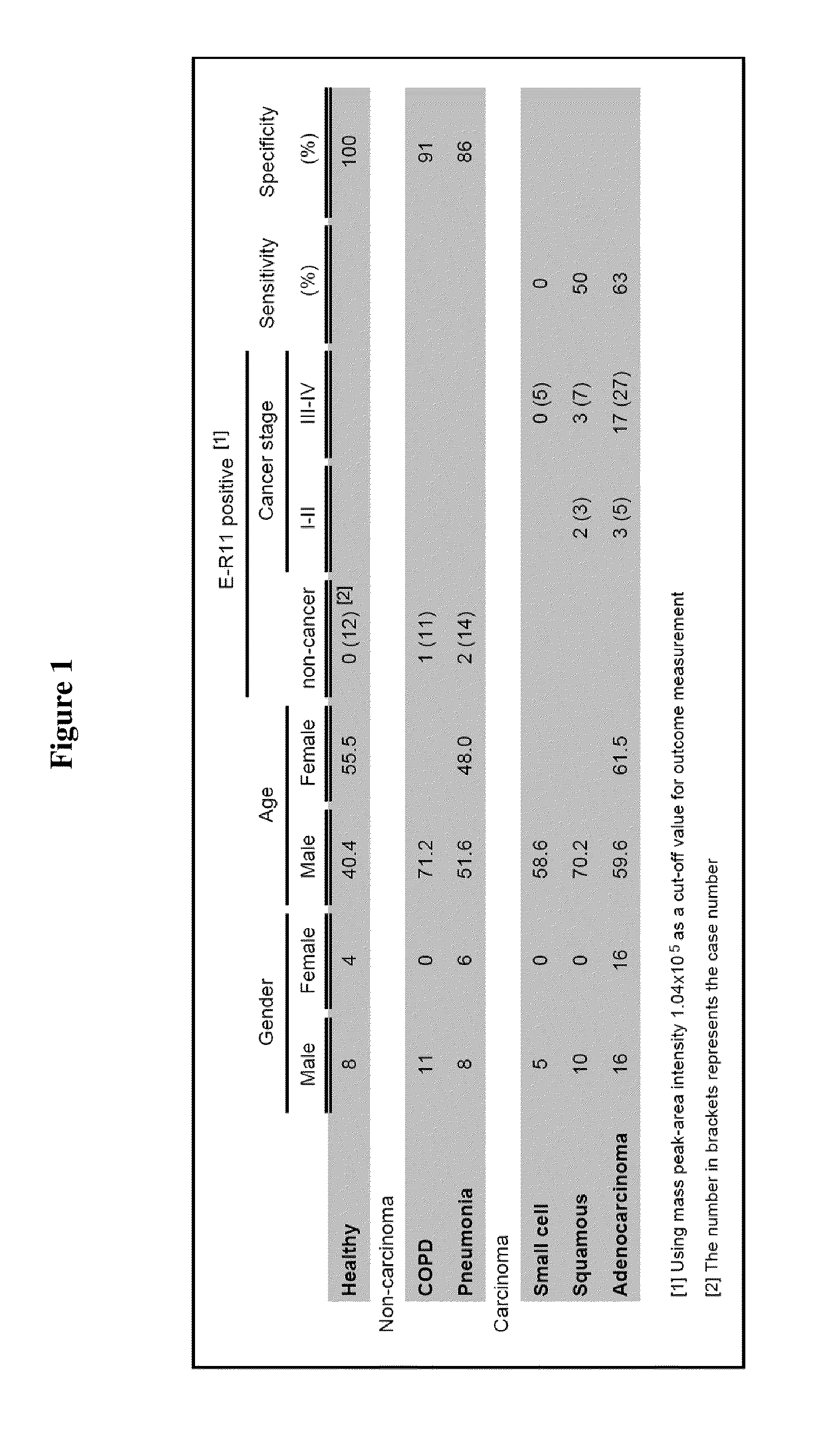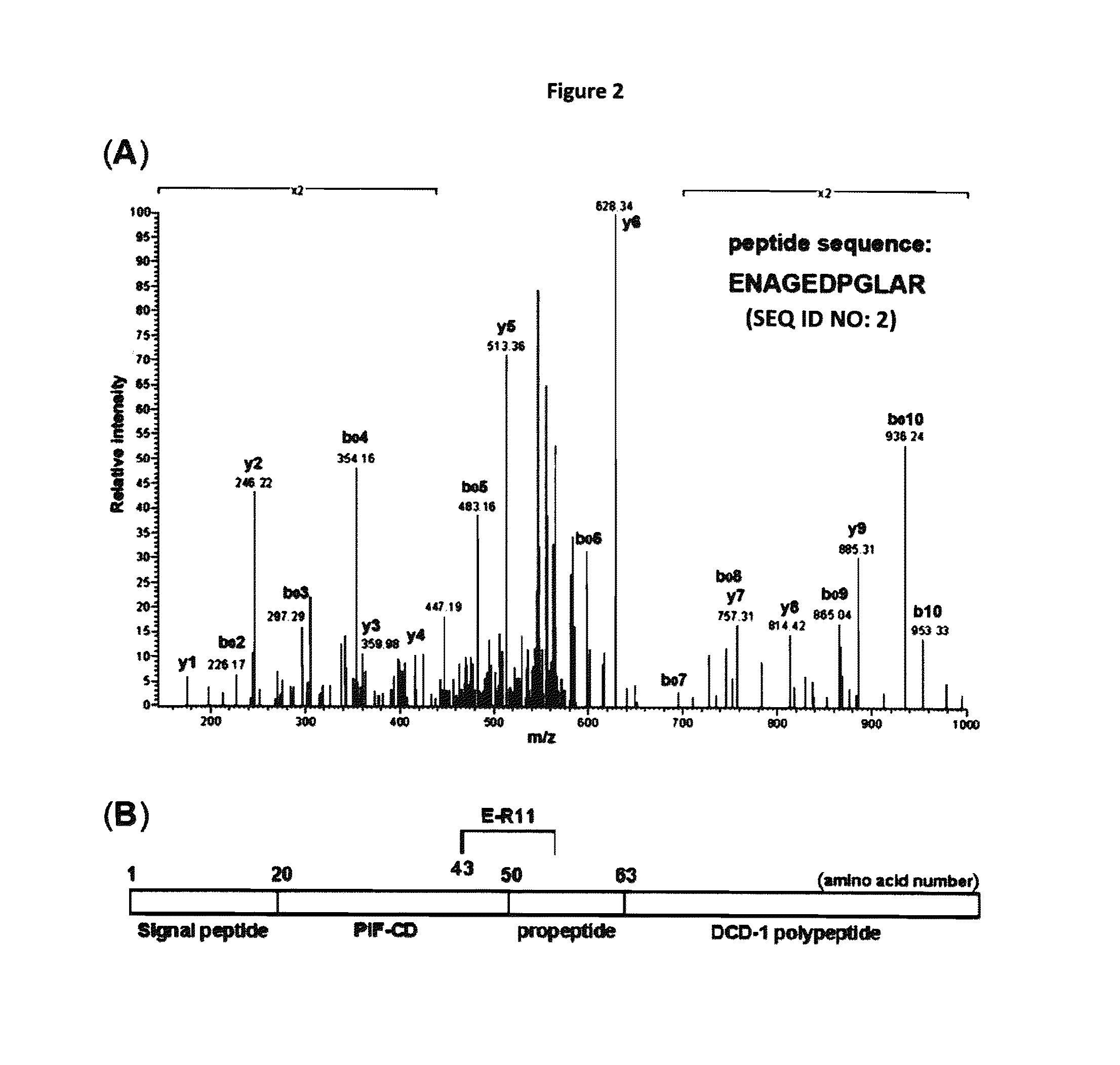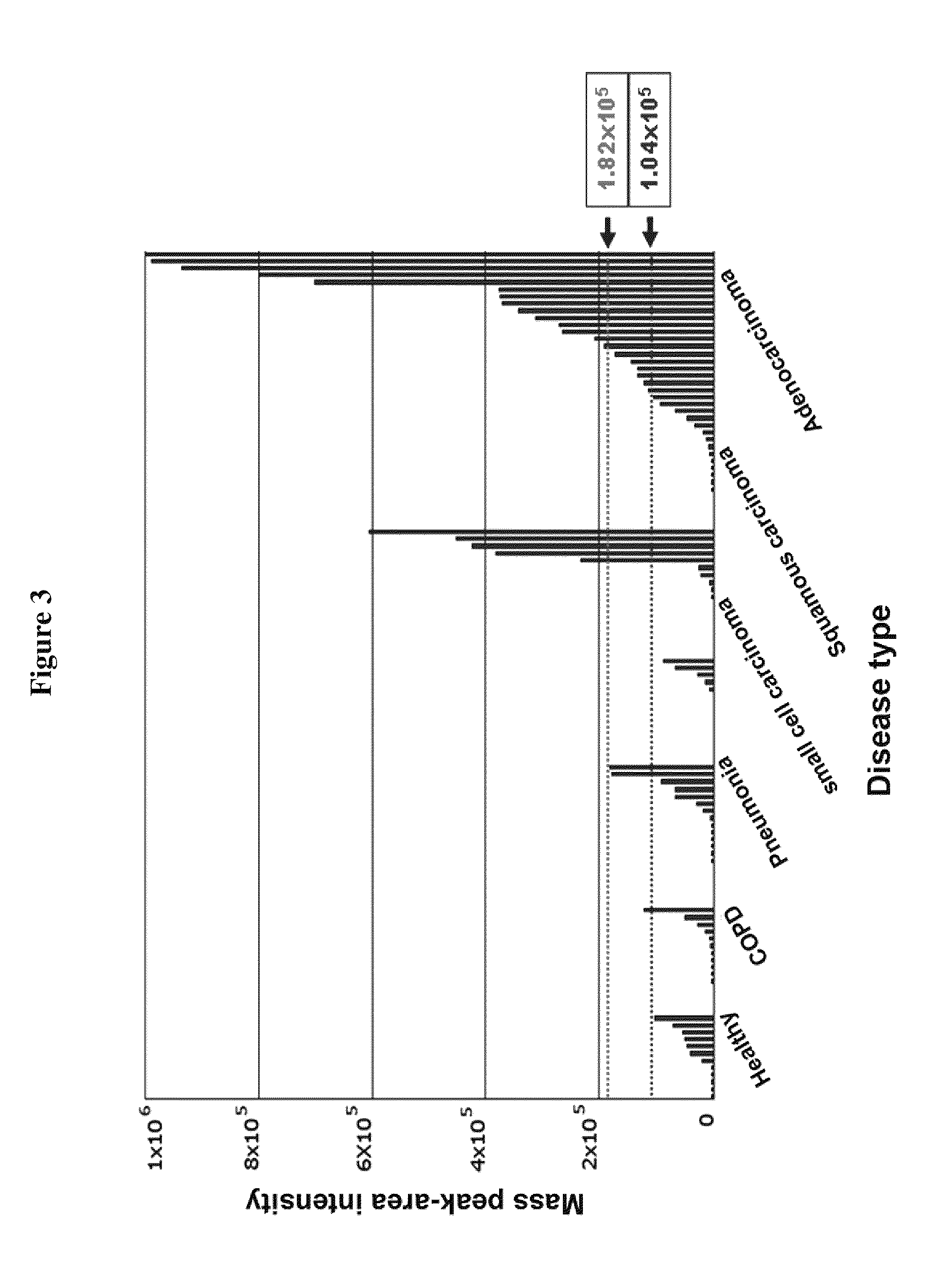Dermcidin-derived peptides for lung cancer diagnostics
a technology of peptides and dermcidin, which is applied in the direction of peptide/protein ingredients, peptide sources, instruments, etc., can solve the problems of low specificity and high cost, cancer is at such an advanced state it is usually incurable, and the current biomarker has not been adequately validated as an effective clinical tool for early screening and diagnosis
- Summary
- Abstract
- Description
- Claims
- Application Information
AI Technical Summary
Benefits of technology
Problems solved by technology
Method used
Image
Examples
example 1
Patients and EBC Collection
[0083]EBC samples were collected from 47 patients with histological evidence of lung cancer—5 patients with small cell carcinoma, 10 patients with squamous cell carcinoma, and 32 patients with adenocarcinoma. 11 patients with chronic obstructive lung disease, 14 patients with pneumonia and 12 healthy subjects for the study were also enrolled. All subjects gave written, informed consent for this study.
[0084]An EcoScreen condenser (Erich Jaeger GmbH, Hoechberg, Germany) was used to collect EBC according to the manufacturer's instructions. Subjects did not eat one hour prior to EBC collection. Subjects were asked to breath at a normal frequency and tidal volume for 15 minutes, while wearing a nose clip. If they felt saliva in their mouth, they were instructed to swallow it. The exhaled air passed through a mouthpiece and a 2-way non-re-breathing valve, and then was frozen at −2° C. The condensates (more than 1 ml) were thawed and then transferred to 1.5 ml mi...
example 2
EBC Purification
[0085]To explore peptide biomarkers, the peptide components of EBC were first analyzed by MALDI-TOF MS. The results revealed that multiple polymer peaks were the major signals in mass spectra (FIG. 6). Thus, we checked the polypropylene collector of EcoScreen condenser and the assigned wash material Descogen to trace the contaminants. After MS analysis, the multiple polymer signals were confirmed coming from the released materials of polypropylene collector and the trace amounts of detergent Descogen. To avoid the interference of polymers and to remove these contaminants, EBC samples were further subjected to the purification by affinity beads. Three kinds of magnetic bead, C18, WCX (weak cation exchange) and Cu, were tested to purify EBC, and their effects on decreasing polymer contaminants were determined by MS analysis. The Cu magnetic bead showed a better removing effect than the others. Therefore, we chose Cu magnetic bead to perform the purification of EBC and ...
example 3
MALDI-TOF MS Analysis
[0087]For MALDI-TOF MS analysis, we mixed 1 μl purified EBC with 1 μl matrix solution consisting of 2,5-dihydroxybenzoic acid (50 nmol / μl in 50% ACN) and 0.4% phosphoric acid. Then 1 μl of the resulting mixture was spotted onto MALDI stainless steel sample plate and allowed to air dry at room temperature. Measurements were performed on an Ultraflex II MALDI-TOF / TOF mass spectrometer (Bruker Daltonik GmbH, Bremen, Germany). Mass spectra were obtained in the range of mass to charge ratio (m / z) from 1,000 to 10,000.
PUM
| Property | Measurement | Unit |
|---|---|---|
| concentration | aaaaa | aaaaa |
| particle size | aaaaa | aaaaa |
| particle size | aaaaa | aaaaa |
Abstract
Description
Claims
Application Information
 Login to View More
Login to View More - R&D
- Intellectual Property
- Life Sciences
- Materials
- Tech Scout
- Unparalleled Data Quality
- Higher Quality Content
- 60% Fewer Hallucinations
Browse by: Latest US Patents, China's latest patents, Technical Efficacy Thesaurus, Application Domain, Technology Topic, Popular Technical Reports.
© 2025 PatSnap. All rights reserved.Legal|Privacy policy|Modern Slavery Act Transparency Statement|Sitemap|About US| Contact US: help@patsnap.com



